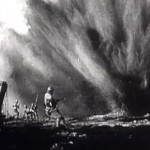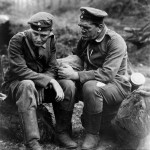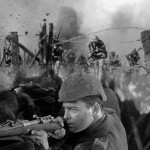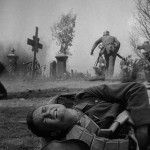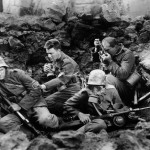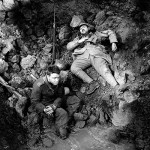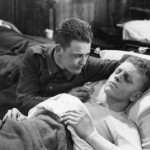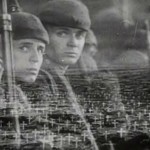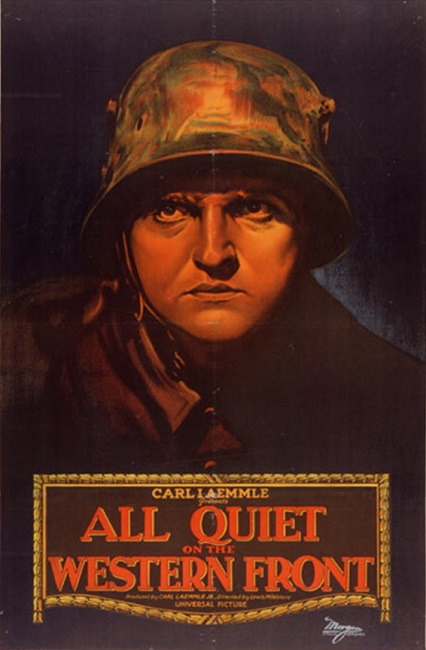
All Quiet on the Western Front – 1929 – 1930
I will start off by saying that this was an excellent movie for a number of reasons. It did a great job of portraying the horrors of World War I. I liked that the story was of a group of German soldiers. It showed that the war was just as horrible for them as it was for American soldiers. Sometimes, as Americans, I think we tend to forget that there are two sides to every conflict.
At first, the plot was difficult to follow because main characters were not established and names were not explicitly given. You learn these things as the film progresses, but you have to figure them out for yourself. The very first scene is of a teacher in Germany as he gives a speech, inspiring his young students to join the German military. They all cheer and go out to sign up. At this point, there are so many students that it is hard to tell one from another or who the main protagonist is.
As they gain combat experience and meet other soldiers, you begin to recognize that the story is following one soldier in particular. He is Paul Baumer, played by Lew Ayres. The film still tells the stories of his fellow soldiers, but concentrates mostly on him.
As I watched, I was reminded of the movie Saving Private Ryan. The battle scenes were very complex and jarring. The constant shell explosions and falling soldiers, the loud sounds and screaming men, the dirt and blood, all made for a very realistic depiction. Some of the imagery was pretty disturbing. The film displayed war and military service as neither clean nor glamorous. It is a sad and pointless tragedy that takes in innocence and turns it into sorrow and pain. It maims and kills friends and comrades. It scars everyone touched by its cold fingers.
The psychological and physical horrors endured by the characters, both the young new recruits, and the old experienced soldiers are easy to empathize with. You see the school boys transform from naïve children into hardened and emotionally damaged men, and you believe such a terrible change to be not only possible, but inevitable.
The final scene is heart-wrenching. As Baumer is reaching for a thing of beauty in his terrible reality of pain and loss, he is killed senselessly and needlessly. Then two images are shown together, one overlaid above the other. They show Baumer as he had been before the war killed his spirit, something close to an innocent smile on his face. The other image is a mass graveyard displaying little white crosses as far as the eye can see. It makes the point that Baumer’s death is just one among many, and implying that his death is the only way the story could have ended.
I happen to love epics and this movie was clearly a prime example. There seemed to be hundreds of extras and a story spanning years. It was exciting to watch. True, the ending was pretty depressing, but that doesn’t make it a bad ending – just a depressing one. The overall message of the film was very anti-war, and it shouted that message loud and clear.
The film boasted no big Hollywood names but the large cast did a fine job of drawing the audience into the hardships, the fear, and the physical and emotional desolation of such a terrible conflict as WWI. The end of the movie would not have been as effective if they didn’t make you really feel for the characters (despite the fact that they were not on “our” side of the war.)
All in all, this is a very engaging epic film. Even if you are not a war buff, this movie is a great example of a war-time drama. There have been several remakes of this movie, but this remains the most widely renowned version.

